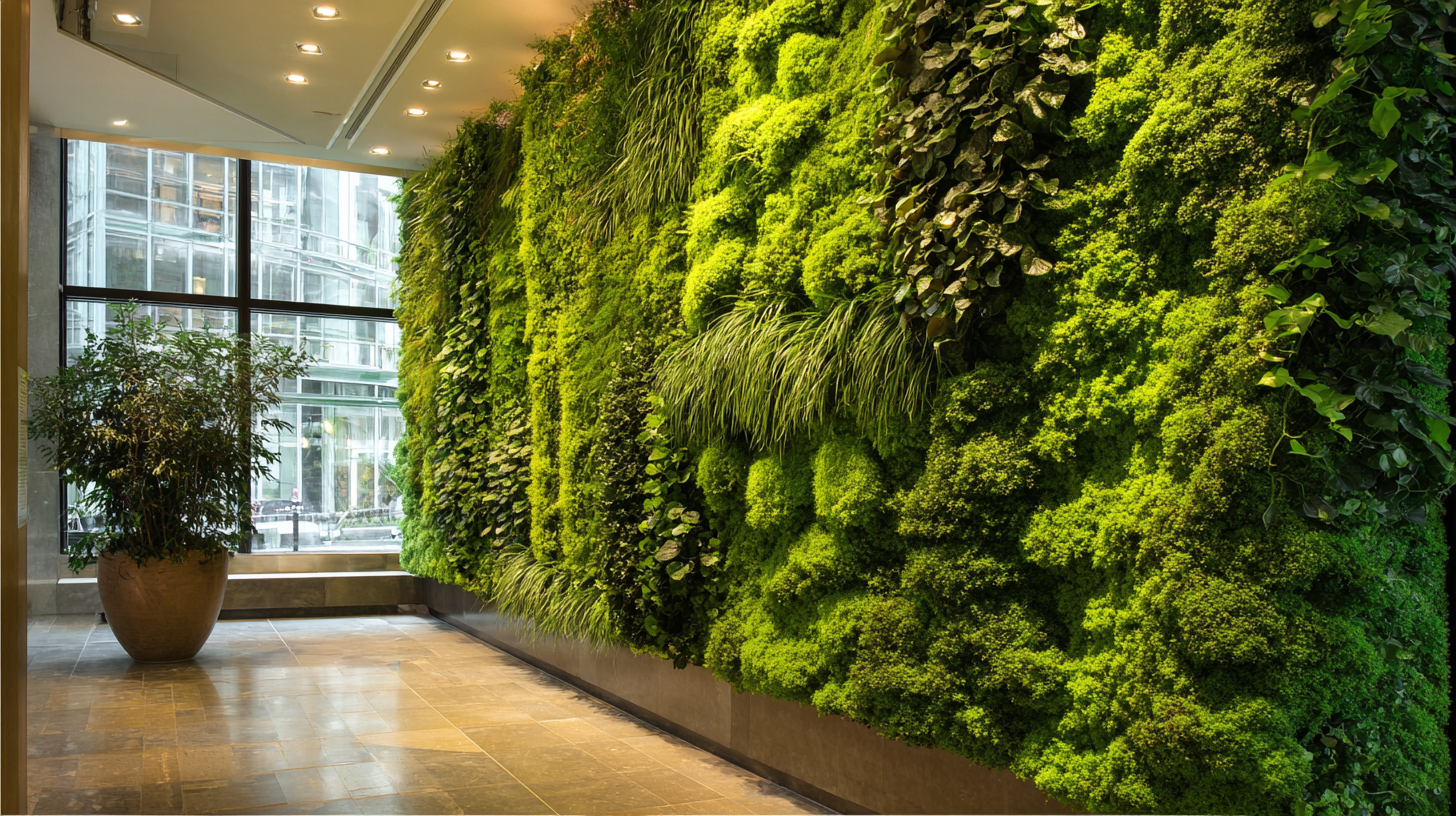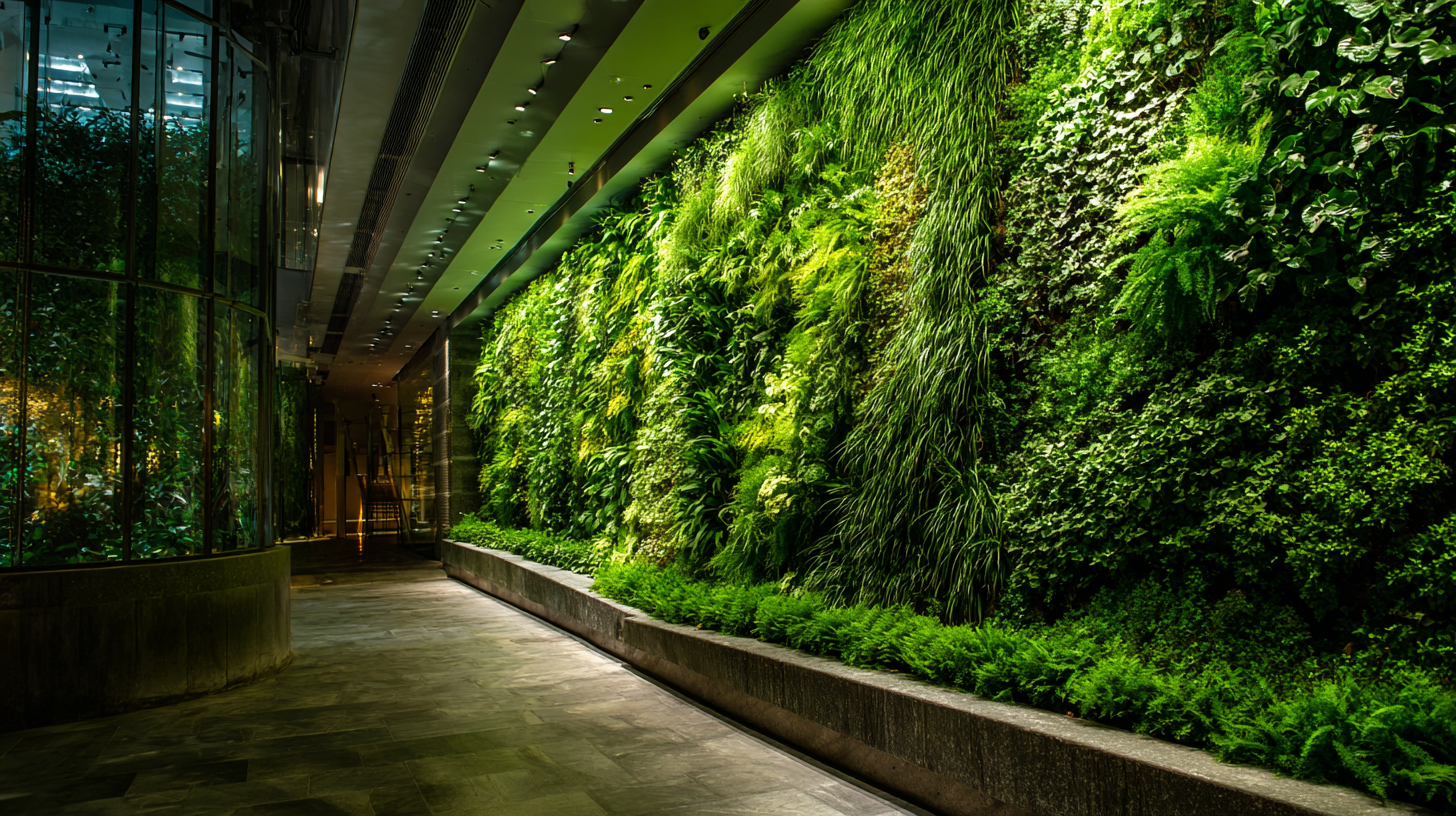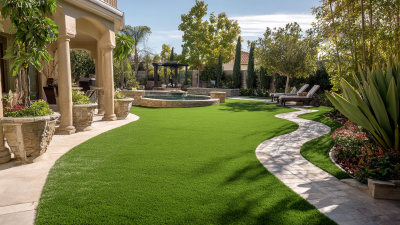As urban environments increasingly prioritize sustainability and aesthetics, the trend of incorporating Plant Grass Walls into interior and exterior design has gained significant momentum. According to a report by the Green Building Council, living green walls can reduce energy consumption by up to 25% by providing natural insulation for buildings. Furthermore, a study published in the Journal of Cleaner Production highlights that green walls contribute to improved air quality and reduce urban heat islands, making them a vital component in modern eco-friendly architecture. Creating a stunning Plant Grass Wall not only enhances the visual appeal of a space but also promotes a healthier environment, aligning with the growing consumer demand for sustainable living solutions. In this ultimate guide, we will explore the essential steps and considerations for transforming your space with an eye-catching Plant Grass Wall, ensuring that you can reap both aesthetic and ecological benefits.

Plant grass walls, also known as vertical gardens, are not only visually striking but also offer numerous benefits that enhance indoor environments. One of the most significant advantages is their ability to improve air quality. The plants used in these installations can absorb pollutants and carbon dioxide while releasing oxygen, creating a healthier atmosphere. Additionally, studies have shown that greenery can reduce airborne toxins, making spaces feel fresher and more inviting.
Beyond their air-purifying properties, plant grass walls contribute significantly to aesthetics. These living walls bring a touch of nature indoors, providing a vibrant and dynamic focal point in any room. They can soften the harsh lines of modern architecture and add warmth to otherwise sterile environments. Furthermore, the lush greenery can help reduce noise levels, creating a more peaceful and serene atmosphere. By integrating plant grass walls into your space, you not only elevate the design but also create a sanctuary that nurtures well-being and enhances overall quality of life.
When creating a stunning
plant grass wall, selecting the right plants is essential to ensure they thrive in your specific environment. Understanding light, climate, and maintenance needs can guide your choices effectively. For regions experiencing heat and drought, consider incorporating
drought-tolerant plants into your design. These resilient varieties not only embellish your wall but also require minimal watering, making them perfect for sunny, low-water areas. Plants like
succulents or specific perennials that can endure dry spells can ensure vibrant growth without demanding much attention.
Additionally, if your space has shaded areas, it’s crucial to choose plants that can flourish with less direct sunlight. Many
shade-loving species, ranging from lush ferns to colorful perennial flowers, thrive even in the darkest corners. Combining both
drought-tolerant and
shade-loving plants in your grass wall can create a rich tapestry of textures and colors, all while catering to the specific light conditions and maintenance levels you’re working with. This thoughtful selection process will result in a
breathtaking green feature that enhances your space effortlessly.
When considering the installation of plant grass walls, the choice between modular systems and traditional methods is crucial. Recent studies highlight the efficiency of modular construction, showing that it can accelerate project timelines by 20 to 50 percent compared to conventional techniques. This speed not only enhances delivery but also reduces waste significantly, addressing growing concerns around sustainability that have become more pronounced in recent times. The rise in modular systems can be attributed to their flexibility and adaptability, allowing for innovative designs that meet the evolving requirements of modern spaces.

Moreover, a comparative analysis of embodied carbon indicates that modular construction tends to have a lower carbon footprint than traditional alternatives. In regions like Hong Kong, where modular integrated construction (MiC) methods are gaining traction, these systems provide a promising solution to reduce overall environmental impact. As the construction industry continues to embrace Modern Methods of Construction (MMC), the integration of technology and prefabrication techniques is set to reshape how we think about building spaces, including stunning plant grass walls that enhance both aesthetics and sustainability.
Green walls, or vertical gardens, have gained popularity not only for their aesthetic appeal but also for their significant Return on Investment (ROI). According to a 2020 report by the World Green Infrastructure Network, evidence suggests that installing a green wall can result in energy savings of up to 30% by enhancing insulation and reducing heating and cooling costs. This reduction in energy consumption translates directly into financial savings for commercial and residential spaces alike.
Moreover, the long-term benefits of green walls extend beyond energy efficiency. Research published by the American Society of Landscape Architects indicates that properties with green walls can see an increase in property value—by as much as 15%—due to their unique appeal and sustainable features. Additionally, green walls contribute to improved air quality and increased biodiversity, which can reduce healthcare costs in urban areas. The initial investment in a green wall can be recouped over time through these savings, making it not just an aesthetic upgrade but a financially sound decision for property owners seeking to enhance both value and sustainability.
As biophilic design gains traction in modern architecture, the incorporation of plant grass walls presents a visually stunning and environmentally friendly solution for enhancing indoor and outdoor spaces. These living walls not only purify the air but also create a serene atmosphere, fostering a connection with nature that is often missing in urban environments. By integrating plant grass walls into architectural designs, spaces can be transformed into vibrant ecosystems that invigorate the senses and promote well-being.

Tips: To maximize the impact of your plant grass wall, consider selecting a variety of native plants that thrive in your local climate. This approach not only supports biodiversity but also ensures lower maintenance and water needs. Additionally, incorporating sustainable materials in the wall structure will further enhance your design’s eco-friendliness.
Architects and designers are increasingly recognizing the aesthetic and health benefits of these installations. The soft textures and vibrant colors of grass and plants can create dynamic backdrops for both residential and commercial spaces. When executed thoughtfully, plant grass walls can serve as eye-catching focal points that blend seamlessly with modern design elements, promoting a harmonious coexistence of nature and architecture.












